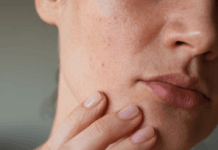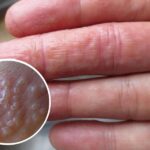There are two scenarios: mild blistering can be uncomfortable, while severe cases may hinder your mobility. If you’re unfortunate enough to experience foot blisters, follow these steps to get your feet back on track quickly:
Managing Foot Blisters
1. Understanding the Cause of Blisters
If you’ve developed foot blisters, friction is likely the culprit. Prolonged walking or standing for hours each day exerts pressure on your heels, soles, and toes. The longer you remain on your feet, the higher the chances of blister formation. Of course, not everyone who walks or stands for extended periods will develop foot blisters.
Typically, foot blisters occur due to a combination of friction, heat, dirt, and moisture. These factors come into play during activities like long-distance walking, exercising, or skating, especially when wearing ill-fitting shoes or socks.
They often surface when breaking in new shoes without giving your feet a chance to adjust. New shoes tend to be stiff compared to the soft skin of your feet, or they may not fit your feet properly.
Excess moisture or sweating can also lead to foot blisters. This is common during warmer seasons for athletes, especially runners. Tiny blisters form when sweat clogs pores in the soles of your feet. Foot blisters can also develop after sunburn.

Early Detection: Spotting Blisters Before They Become Severe
Here are some tips to minimize the occurrence of foot blisters and prevent them from worsening:
- Whenever possible, break in new shoes gradually by wearing them for short periods to allow the shoes to stretch and your feet to adjust.
- Avoid wearing new shoes for extended walks or ill-fitting shoes that cause discomfort and burning sensations, as these can quickly turn into blisters.
- Keep your feet dry and cool.
- If you must continue walking, use pads, blister plasters, or personal adhesive bandages to reduce heat and friction in areas prone to blistering.
Treating Foot Blisters
Foot blisters caused by friction usually heal on their own within a few days with home remedies.
Unfortunately, some blisters may not respond to home treatments or may worsen over time.
Consult a doctor if the blisters cause severe pain or impede your mobility. You should also seek medical attention if you experience fever, nausea, or chills alongside foot blisters, as these could indicate an infection.
Here are some steps you can take at home:
1. Cleanse the Affected Area
Wash the area around the blister with warm water and soap. Additionally, you may apply an antibacterial ointment to the blister.
2. Let the Blister Heal
To pop or not to pop? As a general rule, if the blister isn’t interfering with your daily activities, it’s best to let it heal on its own.
However, if you can’t wait for the blister to heal naturally, you may opt to drain it. Use a sterilized needle cleaned with alcohol or boiled water, or a sterile needle from a first-aid kit.
3. Drain the Blister, if Necessary
Gently insert the needle into one side of the blister and allow the fluid to drain out.
Remember not to remove the blister’s roof, as this may introduce bacteria and lead to infection.
4. Disinfect the Blister
Apply a small amount of povidone-iodine disinfectant to the blister. While it may sting initially, especially with cold spray, it ensures that the open blister doesn’t become infected.
5. Cover the Blister
Use gauze, personal bandages, plasters, or any protective covering. Opt for less adhesive or non-adhesive coverings that can be easily removed without damaging the healing skin underneath.
6. Allow the Blister to Dry
Remove the protective covering to let the wound dry in the open air.
7. Avoid Further Irritation
If you continue to irritate the blister, apply some povidone-iodine disinfectant, cover it with gauze, and secure it with medical tape. This ensures the wound remains infection-free, allows for easy removal of the covering, and prevents further friction.
Avoid using regular adhesive tape, as it is not designed for skin contact and may damage the blister and the surrounding skin. Think of how painful it would be to pull off a band-aid that’s stuck to your skin—using regular tape on a blister could have a similar effect.
8. Keep the Area Clean
Check the blister daily and keep it clean. You may also apply povidone-iodine disinfectant if needed.































